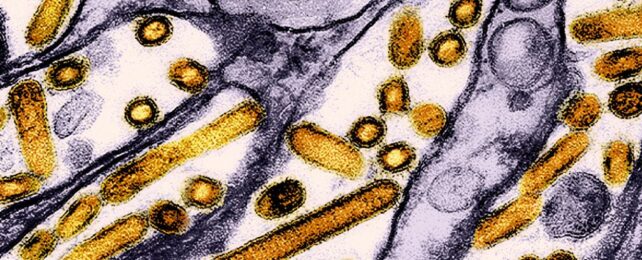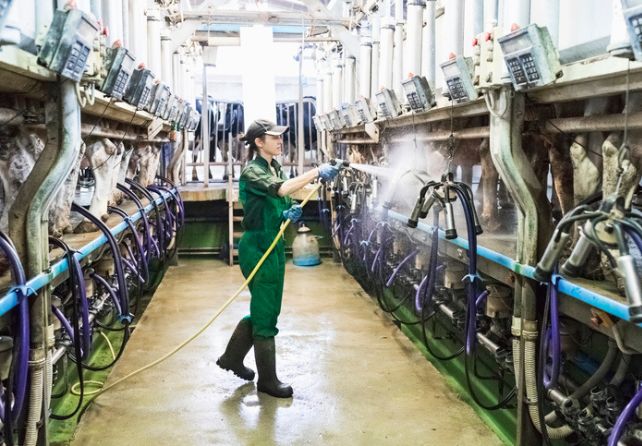November 20, 2024

Blood samples from 115 dairy workers in Michigan and Colorado reveal cases of the highly pathogenic bird flu have been occurring undetected in humans.
US Centers for Disease Control and Prevention (CDC) researchers found 7 percent of those tested between June and August 2024 had antibodies from the highly virulent form of H5N1 in their blood.
The good news is this means most people who have contracted bird flu so far have not been severely impacted. Half of those with the virus antibodies in their blood did not report being ill, so may have only experienced mild symptoms.
However, while the current risk to public health is still low, researchers are concerned that allowing the virus to spread without control provides it with a greater opportunity to mutate into more threatening strains.
A change in the disease's virulence has occurred in Cambodia, where at least three patients have died from their infection. A hybrid between 2.3.2.1c and 2.3.4.4b, that strain of bird flu was contracted from poultry; a preprint study suggests this hybrid has mutations that assist airborne transmission and infection of mammals.
Close tracking suggests the Cambodian outbreak is fortunately limited, and no human-to-human infection has been detected.
Canada has also just reported its first known case of bird flu in humans, a teenager who is currently in a critical condition in hospital with a mutated version of the strain identified in the US dairy cow outbreak. Early genetic sequencing shows a change in a gene known to increase a virus's ability to infect humans.
So far the Canadian case appears to be an isolated incident, but these concerning examples emphasize how easily the risk a virus poses can change, reinforcing the importance of close tracking and careful management of outbreaks.
To date there's only one known case of bird flu with no known animal origin, sparking fears that human to human spread may have begun.
The US dairy workers who had signs of previous infection had all been involved in milking the cows or cleaning the milking parlor. Those that recalled being ill reported symptoms including red, draining or itchy eyes, a fever, sore throat, congested nose, sneezing, diarrhea or headaches.

"None of the workers with HPAI A(H5) virus antibodies reported using the personal protective equipment (PPE) recommended for working with HPAI A(H5)–infected animals, and use of recommended PPE was low among all workers," CDC health scientist Alexandra Mellis and colleagues write in their report.
The CDC is monitoring the situation closely. In addition to poultry outbreaks , over 400 dairy herds have been infected by the highly virulent bird flu across 48 states.
Researchers and healthcare professionals stress the need for continued robust monitoring to prevent further spread and better management of the existing outbreaks in animals.
"These findings support the need for improved outreach to employers and workers about the risk for infection when working with dairy cattle infected with HPAI A(H5) viruses, and for the use of infection prevention measures such as PPE," Mellis and team explain, noting that outreach would need to be culturally appropriate as many of the workers in the recent report are Spanish speakers.
Authorities worldwide are urging us all to maintain good hygiene when interacting with animals and to report sightings of multiple sick or dead birds (US, 1 866 487 3297; UK, 03459 33 55 77; AU, 1800 675 888). Signs of infection in animals include drowsiness, lack of coordination, moving in circles, a head tilt and/or an inability to stand or fly.
Since 2022, the highly virulent bird flu has led to the culling of more than 90 million domestic birds in the US alone. A program to vaccinate California condors has been implemented in order to minimize the disease's impact on this critically endangered bird, but many other species will likely need help as well.
Meanwhile, researchers are working hard to develop a human vaccine too.
The CDC's Morbidity and Mortality Weekly Report can be read here.